Source: The Conversation (Au and NZ) – By Joanna Mendelssohn, Principal Fellow (Hon), Victorian College of the Arts, University of Melbourne. Editor in Chief, Design and Art of Australia Online, The University of Melbourne
Review: Botticelli to Van Gogh: Masterpieces from the National Gallery, London, National Gallery of Australia, Canberra
In London, Covid-19 has closed the British National Gallery. Meanwhile in Canberra, Australia’s National Gallery has opened its doors to an elegant selection of works from Britain’s collection. The two events are not connected, but they do signal how times have changed.
Since 1963, when the Mona Lisa was sent to Washington, asset rich but income poor art museums have relished the combination of kudos and cash that can come with a international tour of collection highlights. Some exhibitions originate when the home institution is closed for redevelopment, others are finely honed exercises in art diplomacy.

In 1975, New York’s Museum of Modern Art sent Manet to Matisse to Australia, an exhibition organised following the election of the Whitlam government. Visitors queued for hours to see that abundance of treasure from the USA. Botticelli to Van Gogh: Masterpieces from the National Gallery, London is the result of a similar diplomatic imperative. This time Japan is the target, and Australia is the fringe beneficiary.
For many years the British government resisted requests for the UK’s National Gallery to tour its collection, one of the greatest in the world. Cultural diplomacy and the 2020 Tokyo Olympics — where the exhibition was headed — led to a policy change.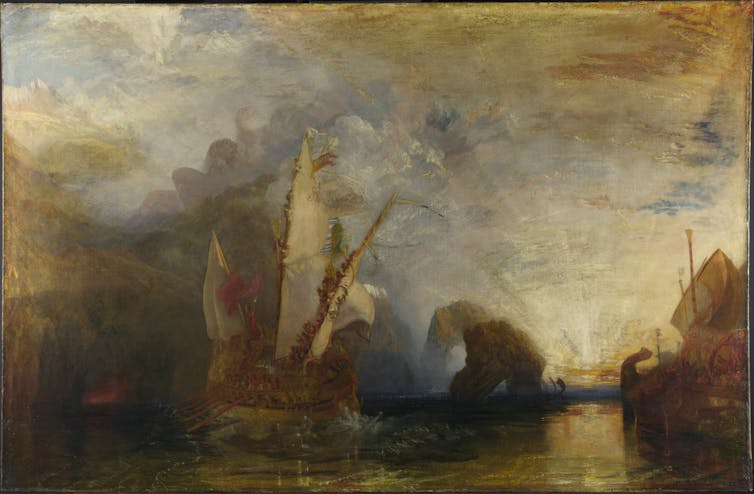
Because of the importance of the Olympics, the exhibition was able to include Vincent van Gogh’s Sunflowers, a work so luminous in its pure gold yellows that no colour reproduction can ever do it justice, as well as Monet’s The Water-lily Pond of 1899, one of his most lyrically beautiful paintings.
Read more: What does an ‘unforgettable, multi-sensory experience’ have to do with Vincent van Gogh?
The British gallery’s director, Dr Gabriele Finaldi, saw this exhibition as one that would both show the range of the collection, and create a narrative about the impact of Britain on western culture.
The economics of touring art meant it was necessary to offer the exhibition to another venue outside of Japan. Canberra took the slot but the arrival of Covid in early 2020 changed all plans. The Olympics were postponed. The exhibition arrived in Tokyo just before all was locked down.
It eventually opened in June, without the Olympics but to a very appreciative audience. One visitor wrote: “What a comfort. What a joy! I could almost cry.”
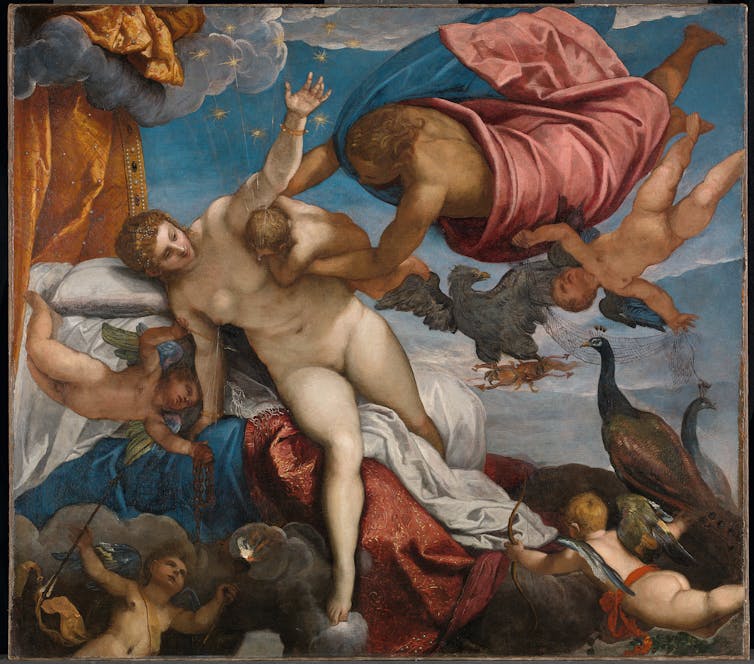
The NGA was able to use the extra time to renovate its temporary exhibitions wing, shaping it to suit the narrative of the exhibition, which Finaldi describes as “the history of picture-making in Western Europe”.
While that assessment is most accurately described as hyperbole (there are, for instance, no works by women) there is a chronological progression and each room is devoted to a different aspect of western art and a different time frame.
Surprising pleasures
There are some surprising pleasures. Paolo Uccello is not represented by one of his standard set-piece battles on horseback, but St George and the Dragon with its saint on horseback. A reproduction of this painting, with its evocation of a magical world, led me to fall in love with art when I was a child.
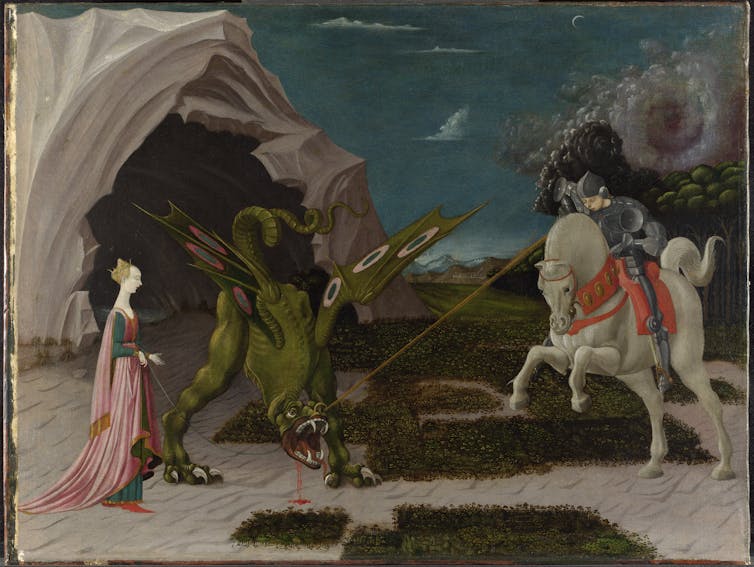
The Botticelli, Four scenes from the Early Life of Saint Zenobius, comes from the later years of the artist’s life, after he became a disciple of Savonarola and renounced the life of the flesh.
Visitors to London see rooms crowded with Dutch art, a reflection of the common Protestant tradition of the two countries. This exhibition however only shows eight paintings from 17th century Holland, sparsely hung in one great room to give visitors a chance to properly focus on Rembrandt’s masterpiece, Self Portrait at the Age of 34.
It also includes the work I would most like to steal, Vermeer’s A Young Woman Seated at a Virginal. As with all of Vermeer’s paintings each shape, tone and colour works in perfect harmony. Every detail — from the painting hanging in the background to the young musician’s dress — implies a narrative we yearn to know.
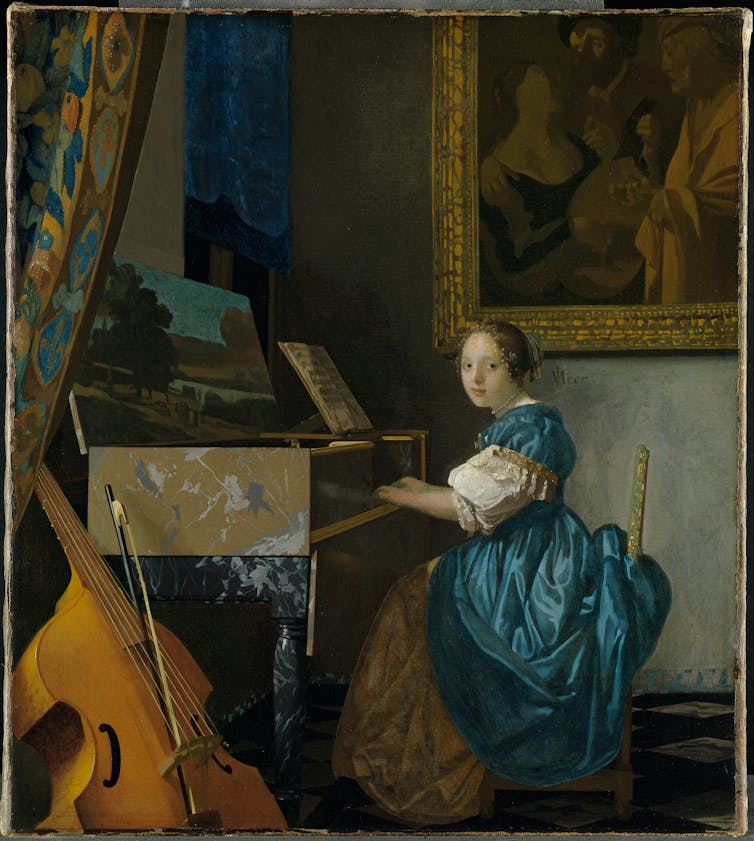
The much vaunted English landscape tradition owes a great deal to the Dutch, but the exhibition includes a truly original Turner and also that master of nature beauty, John Constable. His Cenotaph to the Memory of Joshua Reynolds, all dappled light with a deer, is devised by the artist to place himself within Reynolds’ academic fold.
Spain was “discovered” by the English after the defeat of Napoleon, which is perhaps why the room devoted to it includes a decidedly restrained portrait of Wellington by Goya.
Velázquez’s beautifully realised Kitchen Scene in the house of Martha and Mary, is a reminder of this artist’s intelligent composition as much as his brilliant execution, while El Greco’s Christ Driving the Traders from the Temple has all the passion of the Counter-Reformation.
While the exhibition culminates with a celebration of 19th century modernists — Van Gogh, Cézanne, Monet, Degas, Renoir — whose works glow like jewels on the muted walls, its core is elsewhere.
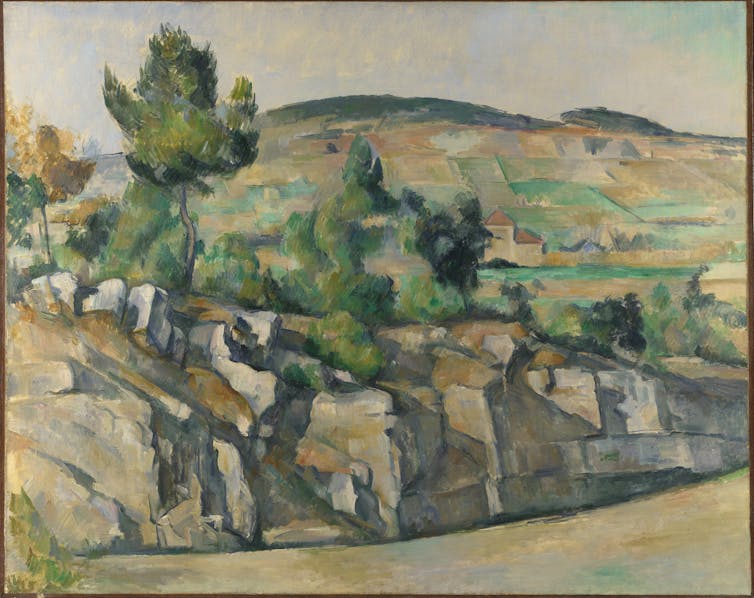
The busiest room at the NGA show consists of 17th and 18th century British portraits, a parade of aristocrats painted by Van Dyke, Reynolds, Gainsborough, Lawrence et al.
They represent the powerful empire that sent its young on Grand Tours of Europe to return with plunder to fill their country houses. Centuries later these works, often bequeathed in lieu of death duties, entered the national collection.
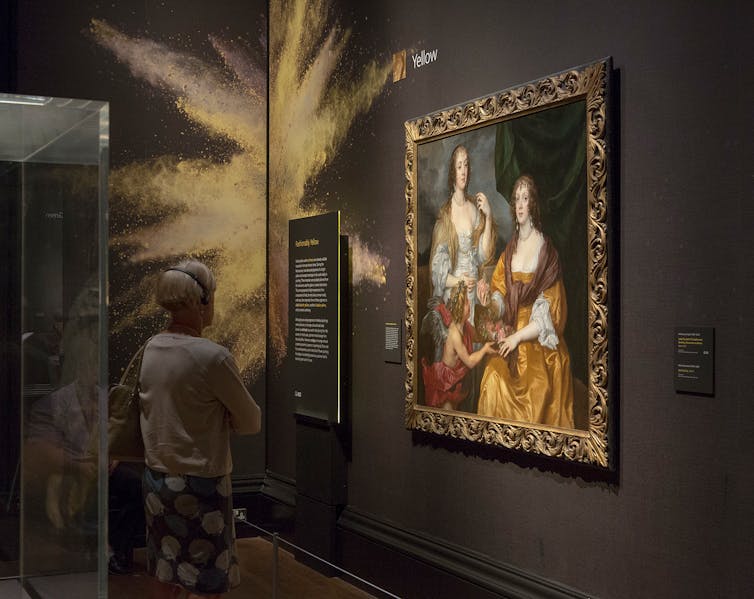
Covid-19 has reshaped the way we see the world. After some decades of cheap international travel, access to distant places is again exotically unobtainable. Even when the widespread use of vaccines open up the skies again, people are likely to proceed with caution and costs are predicted to be out of reach for many.
Travelling exhibitions may once again be the only way most people will be able to access great art from outside their country of origin.
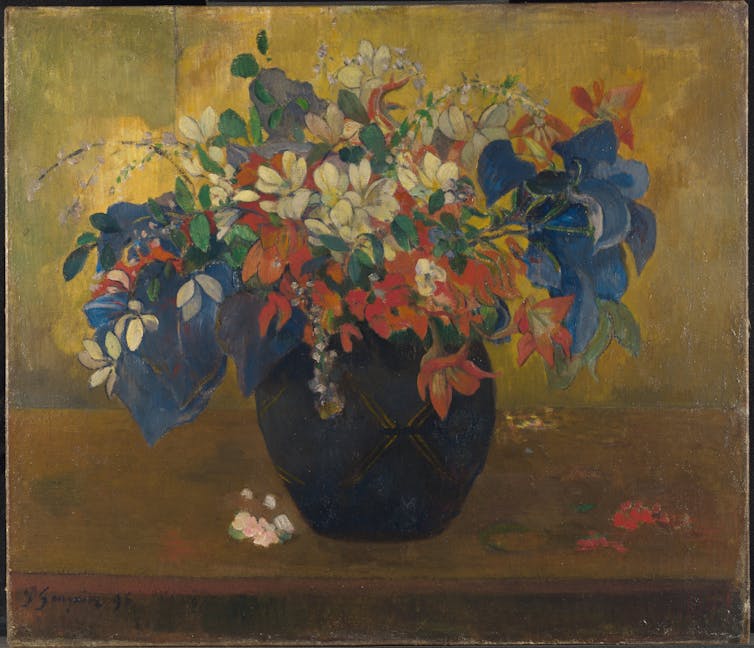
Perhaps the success of this small selection of masterpieces from London, as well as the economic realities of Brexit, may persuade the British Government to permit more art to travel.
Perhaps next time we could see Seurat’s Bathers at Asnières, Gainsborough’s Mr and Mrs Andrews, or even Cézanne’s Bathers. We can only hope.
Botticelli to Van Gogh: Masterpieces from the National Gallery, London is at the NGA Canberra until June 14.
– ref. Botticelli to Van Gogh: from luminous, lyrical beauty to the spoils of empire – https://theconversation.com/botticelli-to-van-gogh-from-luminous-lyrical-beauty-to-the-spoils-of-empire-155963







